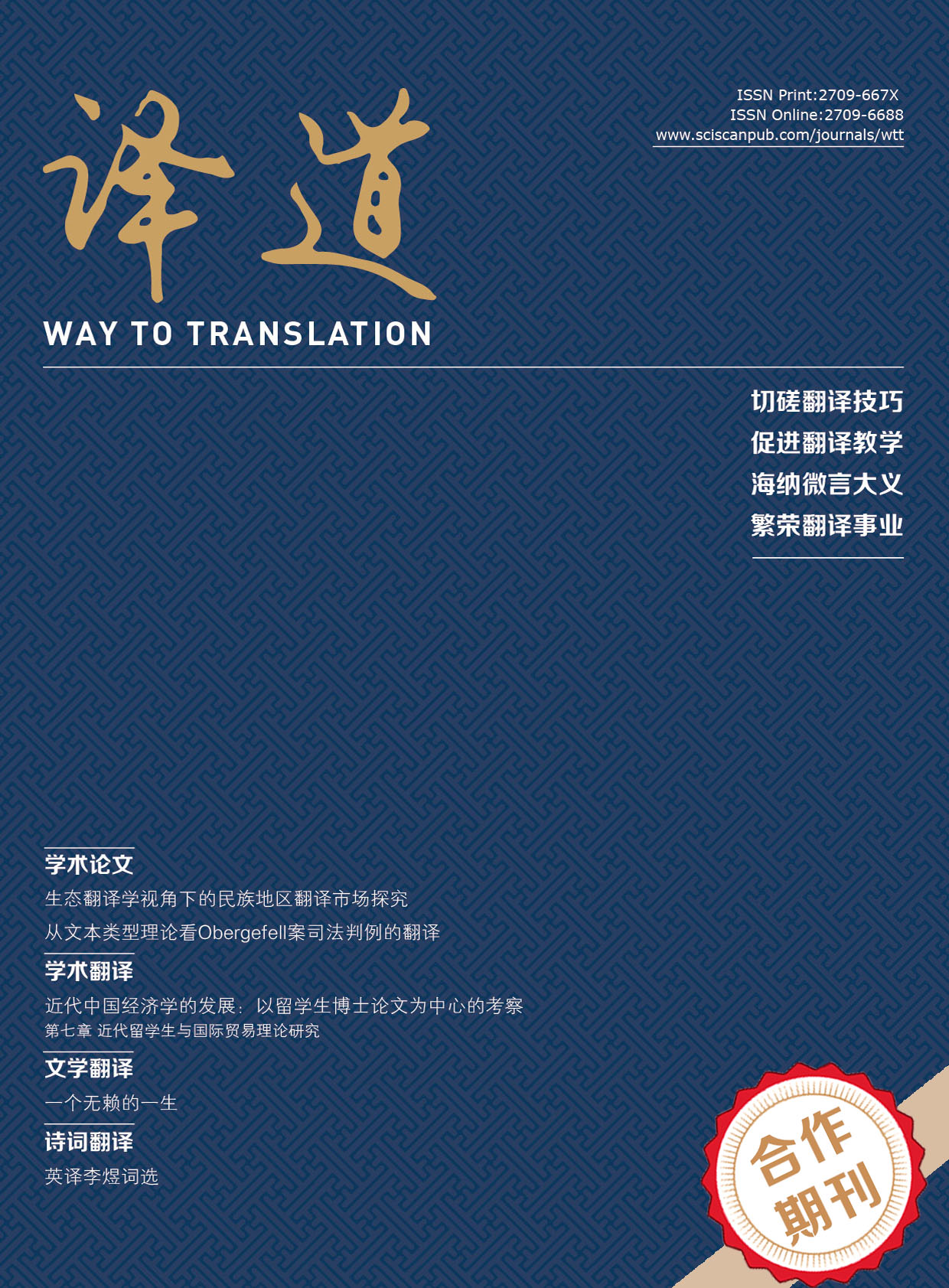Way to Translation
ISSN Print: 2709-667X
ISSN Online: 2709-6688
Contact Editorial Office
Subscribe to the latest published information from SCISCAN
积极翻译腔刍议
On Positive Translationese
- Authors: 冯曼 段安琦
-
Information:
中南财经政法大学外国语学院,武汉
-
Keywords:
Intermediate; Positive translationese; Negative translationese; Rationality中间体; 积极翻译腔; 消极翻译腔; 合理度
- Abstract: Translationese, as a failure to reproduce the multi-dimensional information conveyed in the original text due to the constraints of source language forms, has long been criticized and considered as a disease that shall be cured if one desires to improve one’s translation ability. However, the translated text produced by translator who has to mediate differences in cognition, aesthetics, and social conventions between two cultures, is in nature an intermediate — a special existence between texts meant to be written in both mother languages (in source culture and target culture). Does this special existence imply the continuum where translationese may have some space for reasonable existence? Current researches on “translationese” tend to study the issue from language perspectives, with less attention paid to complex social factors behind it and translators’ autonomous choices. This article starts with clarifying Chinese names for translationese and analyzing reasons of its occurrence. Drawing upon the argument that translation product is an unstable intermediate, this paper concludes that translationese can be divided into negative and positive translationese, which shall be treated dialectically, and it is translators’ duty to produce positive translationese out of sincerity. 翻译腔因受到源语形式的束缚,未能将源语表达的多维信息按目的语规范进行顺畅表达,一直以来饱受诟病,成为翻译能力提升必须克服的顽症。然而,译者面对两种文化在认知、审美和社会规约等诸多差异而产出的译文,本就是介于源语与目的语作为母语创建文本之间的特殊存在,本质上而言可视作一种中间体。这种中间体属性是否意味其连续统区间或会存在翻译腔合理的生长空间?现有的“翻译腔”研究多停留在语言层面,忽略了其背后复杂的社会因素以及译者的主观能动选择。本文从辨析翻译腔释义入手,剖析了其产生的各种原因,从译本作为不稳定的中间体这一视角,将其区分为消极和积极的翻译腔,指出应辩证地看待这一现象,以译者的“真诚”打造积极的翻译腔。
- DOI: https://doi.org/10.35534/wtt.0101003
- Cite: -
















